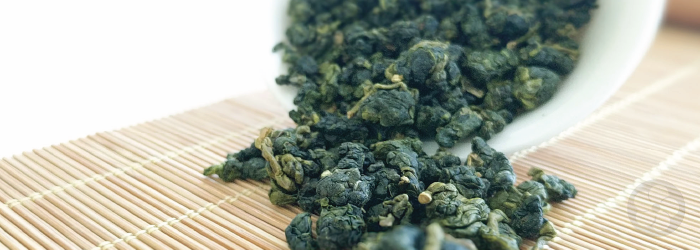3 Delicious Ways to Brew Formosa Oolong Teas

It’s no secret that changing the way you brew a tea can dramatically change the flavor in your cup. Though we always offer specific brewing guides for each of our teas, we always recommend experimenting to find the perfect brewing technique for your palate. Formosa oolong teas, in particular, can produce a wide array of flavors depending on how they are brewed. Here are three of our favorite methods for brewing this unique style.
The most important consideration when brewing these tightly rolled teas is to leave plenty of space for the leaves to expand. High quality formosa oolongs will unfurl from tightly rolled bundles to reveal a large leaf configuration, usually including a bud and two leaves. It’s important that these are allowed to expand fully, in order to release their flavor. If restricted by a mesh tea ball, for instance, hot water won’t permeate to the center of the leaves. In this case, the outer leaves will over-steep, while the inner leaves will not be fully hydrated, and the resulting flavor is likely to be disappointing. Instead, we recommend a large infuser basket or a gaiwan for more space.
Even in a less restrictive vessel like a gaiwan or small Chinese teapot, it can be easy to use too much of the densely rolled dry leaves, and you may find your vessel overflowing as they expand. If you don’t have a scale on hand to weigh your dry leaves, we recommend using one to two teaspoons of leaves per six ounces of water.
Use Cooler Water for Creamy Texture
Taiwanese oolongs are famous for their thick mouth feel, with a creamy texture that coats the palate. Many Taiwanese teas (and imitations) are marketed as “Milk Oolong” to emphasize this quality. But as with all naturally occurring tea flavors, this is a nuanced characteristic. For the creamiest brew, try steeping your formosa oolongs at a temperature around 180°F. Since this low temperature brew won’t create bitterness, feel free to extend the steeping time up to 4-5 minutes for fuller flavor. Use the expansion of the leaves as a guide, decanting when the leaves are about halfway open.
The resulting brew is sure to be a crowd pleaser, so this is also a great method to use when brewing for friends or family. We find the combination of creamy texture, floral aroma, and natural sweetness in a low temperature brew beloved by connoisseurs and novices alike. While any formosa oolong can be brewed this way, we particularly like Fu Shou Shan when brewed at a low temperature for it’s fruity flavor notes and intense creaminess.
Use Hotter Water for Full-Bodied Flavor
While the flavors of a low temperature brew can be enticingly sophisticated, most Taiwanese tea drinkers would consider such a mild infusion to be absurd. Instead, they often brew in what we like to call “farmer style”, with more leaf and hotter water. This is mostly because most tea drinkers (and farmers) in Taiwan drink locally produced tea on a daily basis, and have accustomed their palates to the flavors of this style. Over time, they seek more intensity and complexity, much like aficionados of wine or cheese.
If you’ve been drinking Taiwanese oolongs for a while, or simply find the inherent floral notes a bit cloying, this may be the steeping method you prefer. Try raising the temperature of your water to 200°F, and decant after 30-60 seconds. It is best to use a high quality oolong for this method, since a tea harvested at low elevation is likely to taste vegetal when brewed this way. A tea grown at sufficiently high elevation, however, will develop a flavorful finish in the back of the throat that lingers long after the tea is swallowed. Lishan is a great tea to try with this method, retaining creaminess and complexity while intensifying in the finish.
Cool Down with a Cold Brew
Formosa oolong teas are ideal for cold brewing. An infusion in cold water is sure to draw out the natural sweetness of the leaf and showcase the complexity of flavor in a high quality tea. In fact, this is the method we use for final tasting comparisons when sourcing, in order to taste the tea without the distraction of heat on the palate.
We often recommend making your own teabags to use when brewing cold tea by the pitcher, but the large leaves of formosa oolongs will also sink neatly to the bottom of any brewing vessel, should you prefer to let them float freely. We typically suggest a steeping time of 5-8 hours when making iced tea, but again, the expansion of the leaves is a great indicator of when your tea is ready. Jin Xuan, Winter Sprout is our top pick for a special summer cold brewed treat.
What’s your favorite way to brew formosa oolongs? Let us know in the comments!
Sign up for our newsletter to get blog updates in your inbox!






Comments on this post (0)